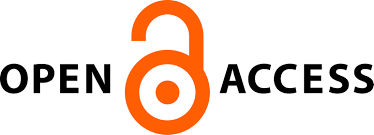KAJIAN DAMPAK EMISI UDARA PADA PRODUKSI MINYAK BUMI DI PERUSAHAAN “A” MENGGUNAKAN METODE LIFE CYCLE ASSESSMENT (LCA)
Main Article Content
Abstract
The largest emission from the petroleum production process is dominated by nitrogen oxide (NOx) gas which accounts for 60% of the total emissions. In this research, an assessment of the impacts that occur from petroleum production activities is carried out using the Life Cycle Assessment (LCA) method. In this study, the identification of environmental impacts was carried out using the SimaPro 9 application software and the midpoint-based assessment. In the midpoint assessment, 1 method is used, namely the CML-IA Baseline method. Life cycle impact assessment (LCIA) or impact assessment using midpoint assessment includes global warming, human toxicity, photochemichal oxidation, ozone layer depletion, acidification, eutrophication, abiotic depletion, and abiotic depletion (fossil fuel). Emissions analyzed include CO2, CH4, NOx and SOx. In this study, the scope of analysis used from the process system is cradle to gate. The results of the analysis resulted in the greatest impact value coming from unit A power generator. The largest impact category from the CML-IA Baseline method is acidification. The results of the sensitivity check analysis resulted in the value of both variations above 10%, namely 16% of each variation. The recommended alternative program scenario is cogeneration technology and nonselective catalytic reduction (NSCR) because it can reduce acidification by 69.81%, eutrophication 69.82% and human toxicity 69.40%.
Downloads
Article Details
Submission of a manuscript to Jurnal Purifikasi means that the work has never been published in another journal and is not under consideration for publication elsewhere. The author hereby agrees to submit the copyright of the manuscript and its contents to Jurnal Purifikasi, if accepted for publication. Accepted manuscripts will be published in printed form where the ISSN is bound in printed form, not in online form (pdf). Authors are not allowed to publish their work in other forms (journals) without permission from the Jurnal Purifikasi manager.
By submitting a manuscript, the author is deemed to know all the rights and obligations attached to each manuscript.








